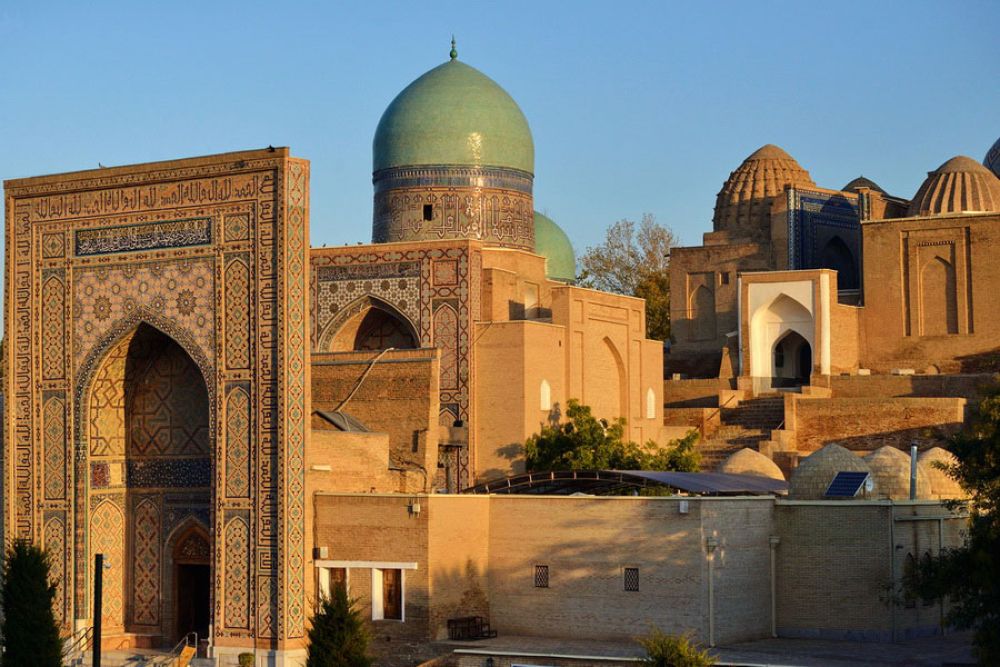

The ShahiZinda Necropolis in Samarkand is one of the most significant historical and religious sites in Central Asia with a rich history that traces back to the 11th century. Revered as a sacred place, it houses an ensemble of mausoleums and other ritual buildings. The name "ShahiZinda" translates to "The Living King," a reference to the cousin of the Prophet Muhammad, Qusam ibn-Abbas, who is said to be buried here. Over the centuries, it has been a site of pilgrimage for the Islamic world, enhancing its historical and spiritual significance.
Early Beginnings: The initial development of the site began in the 11th century. However, it was during the Timurid dynasty, particularly the 14th and 15th centuries, that ShahiZinda Necropolis evolved into the architecturally rich site seen today. The harmonious blend of intricate tile work, ornate facades, and azure blue domes became a major draw for visitors seeking both spiritual enlightenment and artistic inspiration.
20th Century Revival: Following periods of decline and a lapse in tourism, the Soviet era saw a resurgence in the recognition of the site's historic value. Restoration efforts were initiated, and ShahiZinda started to regain its status as a cultural landmark, attracting tourists who were interested in the heritage of the Silk Road.
UNESCO World Heritage Site: As part of the historic center of Samarkand, ShahiZinda became a UNESCO World Heritage Site in 2001. This recognition contributed immensely to its popularity, as the necropolis became an essential part of the itineraries of history buffs, cultural enthusiasts, and tourists from around the world.
Responsible Travel: In recent years, there's been a strong trend towards responsible and sustainable tourism. Visitors are increasingly interested in understanding the site's history and contributing to the preservation of this historic gem.
Virtual Reality Tours: Technological advancements have also influenced how people experience ShahiZinda. Virtual reality tours are growing in popularity, allowing those unable to travel to Samarkand a chance to explore the necropolis digitally.
Cultural Events: To bolster tourism and cultural exchange, various festivals and events are now being held in and around ShahiZinda, such as Navroz (Persian New Year) celebrations, which add a vibrant layer to the visitor experience.
If you're planning a visit to ShahiZinda Necropolis, it's advisable to go with a knowledgeable guide who can provide insights into the site's history and architectural details. The complex is open year-round, though spring and autumn are considered the best times to visit owing to the milder weather. While taking in the majesty of ShahiZinda, visitors should remember to respect the sanctity of the site as it remains an important religious location for the locals.